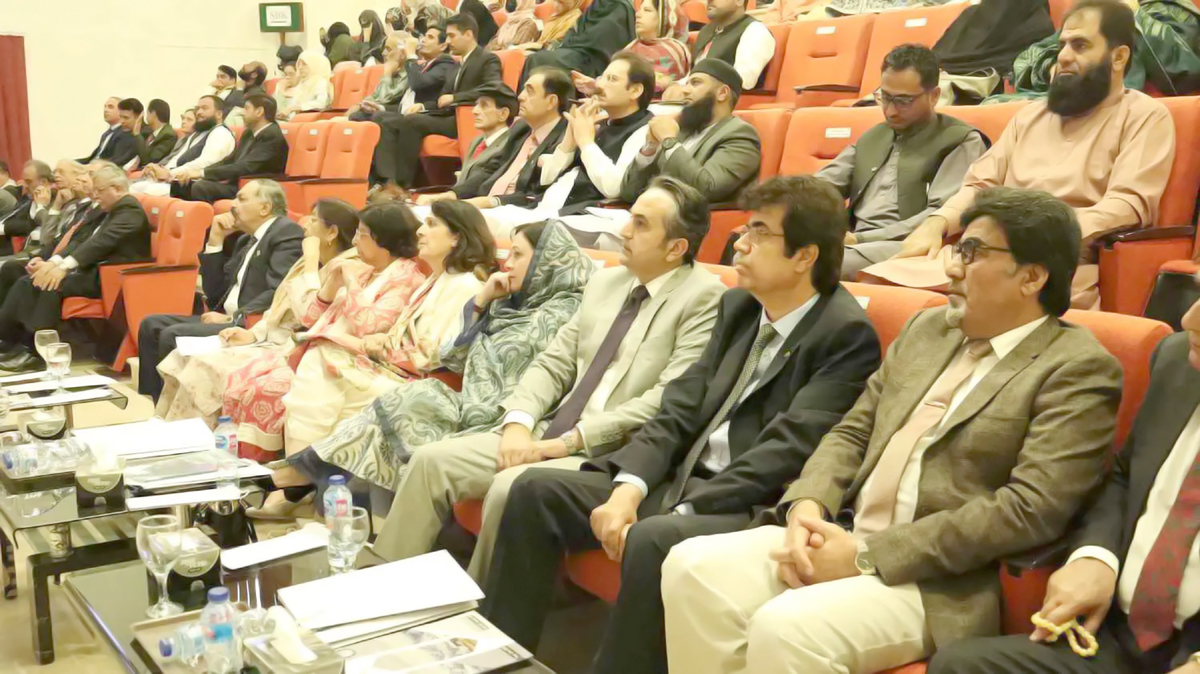By Dr. Syed Jaffar Ahmed
Dr. Syed Ahmed Jaffar’s talk focused on three main topics: the historical rationale of federalism in Pakistan, the constitutional history of Pakistan, and the present status of federating units in Pakistan. His talk in verbatim follows: “Pakistan was created after a long struggle and Quaid-I-Azam Muhammad Ali Jinnah persistently demanded the provincial autonomy for the Muslims.
The Montagu Chelmsford Reforms 1919 gave shape to the provinces and politics shifted to the provinces. It is a historical reality that Muhammad Ali Jinnah suggested more Muslim provinces to increase the ratio of Muslim representations in India. Another reality from history is that provinces were asked either they wanted to join the Federation of India or the Federation of Pakistan.
The Muslim-majority provinces voted to join Pakistan. Thirdly, Pakistan is a diversified society with different cultures, and, in this sense, Pakistan is a federal society which needs Federal arrangements and Federal institutions to ensure the unity of the country.
Obstacles in Socio-Economic and Political Development of Pakistan-Way Forward
Moving onto the constitutional history of Pakistan. The country went through various types of constitutions, starting with the constitution of 1956. The constitution of 1956 was not ideal and was based on uneasy agreements, yet it satisfied East Pakistan, which was given 50 percent representation as compared to the 50 percent representation given to the provinces in West Pakistan.
East Pakistan agreed to that even though it had a 54 percent population. That parliamentary system despite its weaknesses at least ensured some role/participation of East Pakistan. Of the first seven prime ministers of Pakistan from 1947-1958, three were from the East Pakistan – Muhammad Ali Bogra, Khawaja Nazim Uddin, and Hussain Shaheed Suhrawardi. Also, both speakers of the national assembly of Pakistan during that period were from East Pakistan. So, in such an arrangement, there was some give and take even though it was not accepted by the smaller provinces. But after the military takeover of 1958, the demand of the political parties was the restoration of the 1956 constitution.
In 1965 when the presidential elections were held, Fatima Jinnah contested the election against Ayub Khan, for the post of President. Fatima Jinnah and the joint opposition committed to restoring the 1956 constitution or reforming the 1962 constitution and doing away with the indirect elections. The election was held based on the Basic Democracy (BD) system which was introduced by Ayub Khan. The BD system comprised 80 thousand BD members. Fatima Jinnah managed to secure more than 18 thousand votes from East Pakistan. It shows that the democratic trust in the country was coming from East Pakistan which could be maintained till 1970. The BD system favored Ayub Khan to win the presidential election.
In 1969, President Ayub Khan abolished his constitution. Thereafter, President Yahya Khan after coming to power announced that he would hold another constituent assembly election which was held in 1970. Making a constitution is not easy in the sub-continent and the constituent assembly election of 1946 and 1970 could not meet. Members of the constituent assembly (1972-1973) that drafted the current constitution were elected in 1970 when the country was still united.
Third, the status of federalism in Pakistan considering the 1973 constitution despite some weaknesses, has ensured federal arrangements which have kept the country united. This constitution can be amended and further improved. The constitution of 1973 granted autonomy to the provinces to some extent. The 18th constitutional amendment abolished the concurrent list, but it is not the total abolishment of the concurrent list, as the federal government still enjoys a lot of powers. The constitution has been suspended twice in our history by military regimes, The National Finance Commission (NFC) and the Council of Common Interests (CCI) are important institutions, but these have not been allowed to function. Some policy recommendations include the need for strengthening the federal institutions, ensuring internal democracy of the political parties, and controlling the population growth of the country.”


